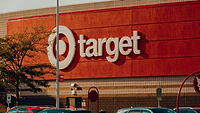Organized Retail Crime Out of Control?


|
| Organized retail crime gangs often target multiple stores to steal a variety of goods. |
Organized retail crime (ORC), already a large national problem, continues to grow rapidly. According to the FBI, the losses attributed to organized retail crime are in the tens of billions of dollars each year.
The face of retail crime used to be petty shoplifters who were eyeing a pack of gum. Today, sophisticated crime rings move from store to store and even city to city. Working in teams, some create distractions while others steal everything from infant formula to DVDs. Often, they are stocking up on specified items at the request of the organized crime leader.
To sell stolen goods, criminals once relied exclusively on the black market or locations like flea markets. Now, retail criminals have embraced technology and more are using Internet marketplaces.
ORC is defined as the theft/fraud activity conducted with the intent to convert illegally obtained merchandise, cargo, cash, or cash equivalent into financial gain (no personal use), where/when the following elements are present:
- Theft/fraud is multiples of items
- Theft/fraud is conducted over multiple occurrences, and/or in multiple stores, and/or in multiple jurisdictions
- Theft/fraud is committed by two or more persons, or an individual acting in dual roles (booster and fence)
Groups, gangs and sometimes individuals are engaged in illegally obtaining retail merchandise through both theft and fraud in substantial quantities as part of a criminal enterprise. These crime rings generally consist of “boosters,” who methodically steal merchandise from retail stores and “fence operators” who convert the product to cash or drugs as part of the criminal enterprise. Sophisticated criminals have even found ways to switch UPC bar codes on merchandise so they ring up differently at checkout, commonly called “ticket switching.” Others use stolen or cloned credit cards to obtain merchandise or produce fictitious receipts to return products back to retail stores.
Looking for a reprint of this article?
From high-res PDFs to custom plaques, order your copy today!







